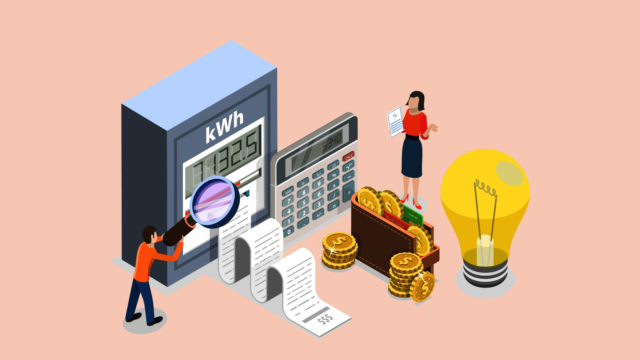Understanding your electricity bill charges
Your monthly power bill is dependent on several factors, and fully understanding the charges and fees is an important part of how you budget for your electricity bill.

In recent months, Kenyans have been forced to dig deeper into their pockets as electricity prices surge owing to a biting drought that has reduced hydropower generation, driving increased uptake of expensive thermal power as fuel prices remain high.
For instance, in February, a breakdown of Ksh100 worth of tokens was as follows;
KPLC Token. MtrNo:46*********
Token:3156-4059-5205-5974-8097
Date:2023-02-26 15:39
Units: 5:08
Amt Ksh:100.00
Token Amt:39.11
VAT:11.6
Fuel Energy Charge:33.45
Forex Charge:9.39
EPRA Charge:0.15
WRA Charge:0.04
REP Charge:1.95
Inflation Adjustment:4.31
A few weeks ago, EPRA raised the fuel cost charge to KShs8.3 per kilowatt-hour (kWh) up from KShs6.59 per unit in February. This is the highest rate of the fuel energy component since June 2012 when it hit a record KShs9.03/kWh. The regulator also raised the forex adjustment component to KShs2.16 per unit from KShs1.85 per unit last month due to the weakening of the Kenyan Shilling against the US dollar.
This implies that consumers will be getting fewer units of electricity for the same amount of money compared to previous months. This is clearly illustrated by the latest bills consumers are receiving adding pressure on them as they heave under the rising burden of the high cost of living.
In March, a breakdown of Ksh100 worth of token is as follows;
KPLC Token. MtrNo:46**********
Token:3257-7805-0259-8576-0628
Date:2023-03-10 06:57
Units:4.55
Amt Ksh:100.002
Token Amt:35.04
VAT:11.63
Fuel Energy Charge:37.73
Forex Charge:9.83
EPRA Charge: 0.13
WRA Charge:0.03
REP Charge:1.75
Inflation Adjustment:3.86
Figures from the Energy & Petroleum Regulatory Authority (EPRA) show hydropower generation dropped sharply to 112.7 million units in February from 184.68 million units in January. Hydro is the country’s second largest power source after geothermal.
As a result, understanding your pre-paid or post-paid charges is very critical.
To better understand the pricing structure, here is a breakdown of the billing structure.
Balance brought forward: This is your previous bill balance. If it’s already been settled, that payment is reflected here.
Consumption: This is your electricity consumption within the billing period or prepaid vending month in kilowatt hours and shillings.
Fuel Cost Charge: This is the money used for generation of electricity from thermal power plants. It varies monthly depending on the quantity of thermal generation and the cost of fuel.
Forex Adjustment: The foreign exchange component is related to the fluctuation of hard currencies against the Kenyan Shilling for expenditure denominated in these currencies related to the power sector (like project loan repayments).
Inflation adjustment: Varies according to the domestic and international inflation on cost of supply. It is adjusted after every six months starting from the 1st of January.
ERC Levy: Is currently set at 3 cents per kilowatt hour and is passed to the Energy Regulatory Commission (ERC) to cover its operational costs.
REP Levy: This is currently set at 5 percent of the cost of the units consumed and is passed to the Rural Electrification Authority (REA) for implementation of Rural Electrification Projects.
WRA Levy: Is currently set at 0.05 cents per kilowatt hour and is passed to the Water Resource Authority (WRA) for hydro-power generation of 1 Megawatt and above. In the pre-paid token receipts WRA levy is combined with the ERC levy.
V.A.T: Is currently set at 16 percent and is applicable to consumption, fuel cost charge and forex adjustment.
Payments: This the payment received for your previous bill.
However, Kenya Power has stopped giving a detailed breakdown of power bills. Instead, the utility firm now shows customers only the amount spent, units received, token amount and a lump sum of all the pass-through cost under “other charges”.
